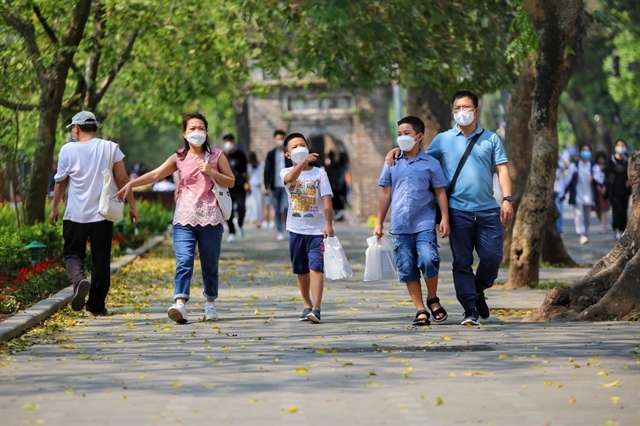 Society
Society


|
| A family walks around the pedestrian area in Hoàn Kiếm District, downtown Hà Nội. — VNA/VNS Photo Tuấn Đức |
HÀ NỘI — Vietnamese people are the fourth tallest people in Southeast Asia, after Singapore, Thailand and Malaysia, thanks to improvements in maternal and child nutrition, heard a workshop held by the Ministry of Health in Hà Nội.
Dr. Trần Đăng Khoa, Deputy Director of the ministry’s Department of Maternal and Child Health, said the average height for women and men rose by 3.3 and 5.8 cm during the 2000-20 period to reach 155.6cm and 168.1cm, respectively.
Vietnamese people are still getting taller over the past two decades but not as quickly as others in Asia however, he noted.
According to the official, maternal and child healthcare in Việt Nam has seen many positive changes, but there remains a disparity between regions and among ethnic groups.
He noted that the rate of pregnant women receiving antenatal care at least four times during pregnancy surpassed 80 per cent. The rate of women giving birth supported by medical staff stood at 95 – 97 per cent, and around 80 per cent receive postpartum care in the first week.
However, the maternal mortality rate in the Mong ethnic group is 7-8 times higher than that of their Kinh and Tay sisters, and the mortality rate of infants aged under 1 in rural areas is twice as high as in urban areas.
In addition, neonatal mortality is still high, accounting for 70-80 per cent of deaths among under-1-year-old infants.
The rate of stunting among ethnic minority children (31.4 per cent) is two times higher than that of children of the Kinh ethnic group (15 per cent).
Explaining the reasons for these problems, Khoa said that the first is the lack of human resources, especially specialists in obstetrics, paediatrics, anaesthesiology and resuscitation.
The second is the lack of medical facilities and equipment, he stated, adding that in disadvantaged areas, the capacity of medical staff in obstetric and neonatal emergencies, in stages such as screening, diagnosis, and prognosis and treatment, is limited. — VNS




